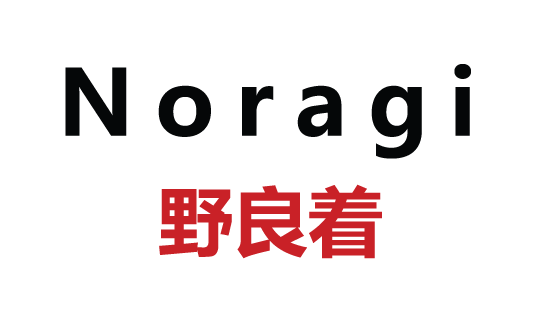Shibori Process
Share
Shibori is a traditional Japanese resist dyeing technique that dates back to the 8th century. The term "shibori" comes from the Japanese verb "shiboru," which means to wring, squeeze, or press. This technique involves various methods of folding, twisting, tying, or compressing fabric before dyeing it, resulting in intricate patterns and designs.
Types of Shibori Techniques
Shibori encompasses a wide range of methods, each producing distinct patterns. Some of the most well-known techniques include:
Kanoko Shibori:
Miura Shibori:
Kumo Shibori:
Arashi Shibori:
Itajime Shibori:
Nui Shibori:
Process of Shibori
Preparation: The fabric, often silk or cotton, is prepared by washing and sometimes treating it to help the dye adhere better.
Binding: The chosen shibori method(s) are applied to the fabric. This step is crucial as it determines the final pattern.
Dyeing: The bound fabric is immersed in a dye bath, traditionally using indigo. The dye does not penetrate the bound areas, creating resist patterns.
Drying: After dyeing, the fabric is carefully rinsed and dried.
Unbinding: The bindings are removed to reveal the resist patterns.
Finishing: The fabric may be further treated, steamed, or ironed to set the dye and smooth the fabric.
Characteristics and Uses
Unique Patterns: Each piece of shibori fabric is unique due to the hand-binding and dyeing process.
Variety of Designs: The technique allows for a vast range of patterns, from simple dots and stripes to complex, detailed designs.
Cultural Significance: Shibori has been an integral part of Japanese textile art, used in traditional garments like kimonos and modern fashion and decor items.
Modern Influence
Shibori has seen a resurgence in popularity, both in Japan and internationally. Contemporary designers and artisans appreciate the technique for its rich history, aesthetic appeal, and sustainable practices. Modern applications of shibori include fashion, home textiles, and even art pieces, blending traditional methods with contemporary styles.
Preservation and Innovation
Efforts are being made to preserve traditional shibori techniques through educational programs, workshops, and exhibitions. At the same time, artists and designers continue to innovate, experimenting with new materials, dyes, and methods to keep the art form vibrant and relevant.
In summary, shibori is a versatile and intricate Japanese dyeing technique that has evolved over centuries. Its various methods of binding and dyeing fabric create a wide range of beautiful patterns, each unique and reflective of the artisan's skill.
Types of Shibori Techniques
Shibori encompasses a wide range of methods, each producing distinct patterns. Some of the most well-known techniques include:
Kanoko Shibori:
- Method: Fabric is bound with thread or small objects (like pebbles) to create circular or dot patterns.
- Characteristics: Resembles the tie-dye techniques commonly seen in the West, but often more detailed and precise.
Miura Shibori:
- Method: Fabric is looped with a needle and thread, then twisted and bound without knots.
- Characteristics: Produces a water-like, rippled pattern. Known for its ease and speed of execution.
Kumo Shibori:
- Method: Fabric is pleated and bound in a way that creates spider-like patterns.
- Characteristics: Results in radiating, web-like designs.
Arashi Shibori:
- Method: Fabric is wrapped around a pole, bound with thread, and then compressed. The pole is often twisted, creating diagonal patterns.
- Characteristics: Produces diagonal or spiral patterns, resembling storm-driven rain (hence the name "arashi," meaning "storm" in Japanese).
Itajime Shibori:
- Method: Fabric is folded and clamped between two pieces of wood or other shapes, then dyed.
- Characteristics: Creates geometric patterns, often symmetrical and repeated.
Nui Shibori:
- Method: Stitching is used to create patterns, with the fabric drawn tight before dyeing.
- Characteristics: Produces intricate, linear designs that can be highly detailed and precise.
Process of Shibori
Preparation: The fabric, often silk or cotton, is prepared by washing and sometimes treating it to help the dye adhere better.
Binding: The chosen shibori method(s) are applied to the fabric. This step is crucial as it determines the final pattern.
Dyeing: The bound fabric is immersed in a dye bath, traditionally using indigo. The dye does not penetrate the bound areas, creating resist patterns.
Drying: After dyeing, the fabric is carefully rinsed and dried.
Unbinding: The bindings are removed to reveal the resist patterns.
Finishing: The fabric may be further treated, steamed, or ironed to set the dye and smooth the fabric.
Characteristics and Uses
Unique Patterns: Each piece of shibori fabric is unique due to the hand-binding and dyeing process.
Variety of Designs: The technique allows for a vast range of patterns, from simple dots and stripes to complex, detailed designs.
Cultural Significance: Shibori has been an integral part of Japanese textile art, used in traditional garments like kimonos and modern fashion and decor items.
Modern Influence
Shibori has seen a resurgence in popularity, both in Japan and internationally. Contemporary designers and artisans appreciate the technique for its rich history, aesthetic appeal, and sustainable practices. Modern applications of shibori include fashion, home textiles, and even art pieces, blending traditional methods with contemporary styles.
Preservation and Innovation
Efforts are being made to preserve traditional shibori techniques through educational programs, workshops, and exhibitions. At the same time, artists and designers continue to innovate, experimenting with new materials, dyes, and methods to keep the art form vibrant and relevant.
In summary, shibori is a versatile and intricate Japanese dyeing technique that has evolved over centuries. Its various methods of binding and dyeing fabric create a wide range of beautiful patterns, each unique and reflective of the artisan's skill.
